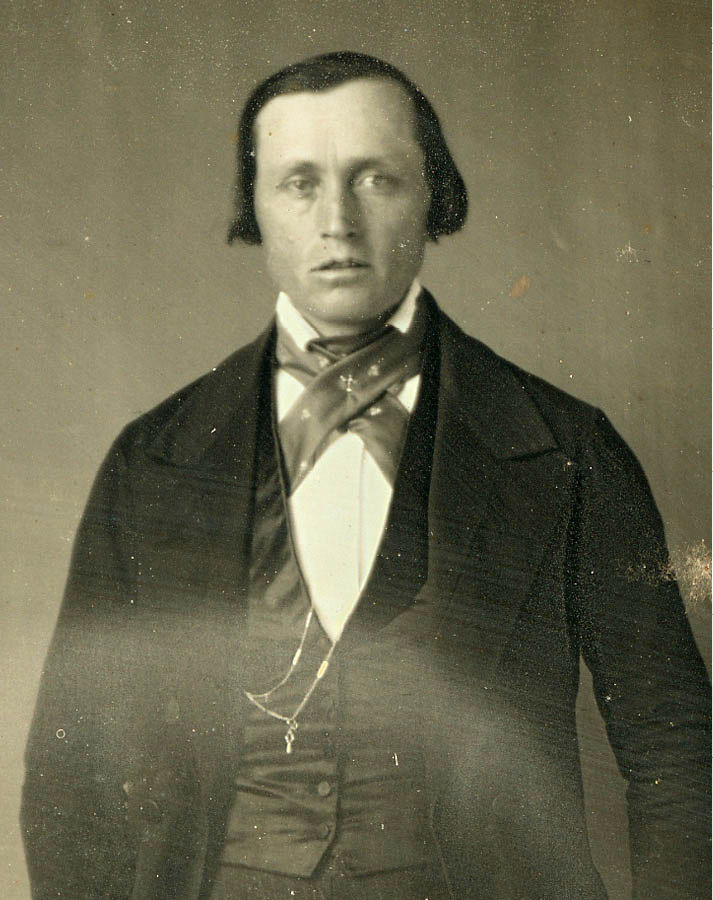Erastus Snow
(1818-1888)


D&C 136:12
By Susan Easton Black
In his youth, Erastus studied the teachings of the Savior and repeated them again and again to himself until he had them memorized. At age fourteen, he listened to the preaching of Orson Pratt and Luke Johnson. He was so excited about their message of the Restoration that he requested baptism. He was baptized on February 2, 1833, at Charleston, Vermont, by William Snow. From the day he entered baptismal waters, Erastus was anxious to preach the gospel of Jesus Christ. After being ordained a priest on November 13, 1834, by William Snow, he served a mission to Vermont, New York, and New Hampshire.
In December 1835, at age seventeen, Erastus arrived in Kirtland, Ohio. In that city of the Saints, he received a patriarchal blessing from Joseph Smith Sr. In the blessing Erastus was told, “You have desired to preach the Gospel, even when you knew it not. Therefore, thou shalt preach it to the ends of the earth.”1 Anxious to fulfill the promised blessing, Erastus served another mission. This time he journeyed to Pennsylvania and Maryland. On this mission, he preached 220 sermons and baptized fifty persons. When he returned to Kirtland, Erastus learned that dissenters had taken over the Kirtland Temple and mobs were forcing the Saints from their homes. Erastus moved on to Far West, Missouri. In that Latter-day Saint community, he defended members from the mob element and assisted in their removal to Illinois.
Erastus soon married and took his bride to an abandoned military barracks in Montrose, Iowa. They shared living quarters in the barracks with Brigham Young and Wilford Woodruff and their families. Once Erastus had his bride in proper quarters in Nauvoo, he once again accepted a mission call. This time he labored in Pennsylvania, New Jersey, and Massachusetts. While serving this mission, Erastus learned of the martyrdom of Joseph and Hyrum Smith.
Returning to Nauvoo, he turned his attention to completing the Nauvoo Temple. Before the final stone was placed atop the temple, the Latter-day Saint exodus to the West had begun. Erastus packed his possessions and joined other Saints in crossing the Mississippi River to the Territory of Iowa. He then trekked across the loess hills of Iowa, stopping in temporary encampments along the way.
Erastus was invited to join the vanguard pioneer company led by Brigham Young. On his journey across the plains to the Rocky Mountains, he was rebuked by Brigham Young for neglecting the cattle. This was the first time Erastus had been rebuked by a Church leader since joining the Church fifteen years earlier, and he hoped “it may last me for the next fifteen years.”2
Erastus Snow and Orson Pratt were the first Latter-day Saints to see the Salt Lake Valley. Erastus wrote in his journal on July 21, 1847: “This morning I started on horseback, and leaving Canyon Creek I ascended westward five miles to the summit of the Mountain Pass. … [At] the first glimpse of the blue waters of the Great Salt Lake, [we] swung our hats and shouted, ‘Hosannah!’”3
On February 12, 1849, Erastus was ordained an apostle of the Lord Jesus Christ. For nearly four decades, he exemplified the works of an apostle. For example, his missionary labors in the Scandinavian countries in 1850 was exceptional. He supervised the Danish translation and publication of the Book of Mormon, the Doctrine and Covenants, and a hymnal. He published the newspaper Scandinavian Sterne. In 1852 he presided over the Iron Utah Mission. He supervised the settling of pioneer communities and saw them begin to prosper. In 1854 he organized a stake in St. Louis, Missouri; supervised Latter-day Saint emigration to the Salt Lake Valley; and published the newspaper St. Louis Luminary. In 1861 he presided over the “Dixie Mission” and strengthened struggling communities throughout southern Utah, Arizona, Nevada, and New Mexico.
His life dramatically changed in 1884 when federal government officials sought to imprison him for living the law of plural marriage. To avoid arrest, Erastus fled to Mexico. For nearly four years, he strengthened the Saints living in the Mormon colonies of Chihuahua. Even though he knew that government officials still sought to imprison him, in 1888 Erastus returned to Salt Lake City. He died on May 27, 1888, in Salt Lake City at age seventy. President Joseph F. Smith said of him, “As an orator and profound reasoner, I always felt impressed that he had no superior, especially when he warmed up to his subject, and entered into his discourse with the full force and energy of his active and vigorous mind.”4
1. Andrew Karl Larson, Erastus Snow: The Life of a Missionary and Pioneer for the Early Mormon Church (Salt Lake City: University of Utah Press, 1971), 25.
2. Larson, Erastus Snow: The Life of a Missionary, 148.
3. Larson, Erastus Snow: The Life of a Missionary, 160–61.
4. Joseph F. Smith, Gospel Doctrine (Salt Lake City: Deseret Book, 1977), 199.
